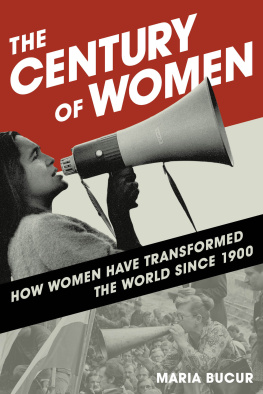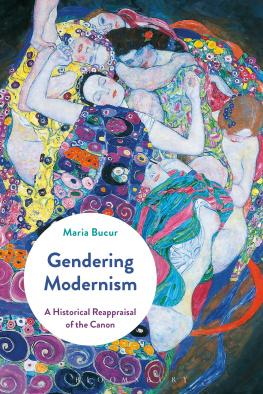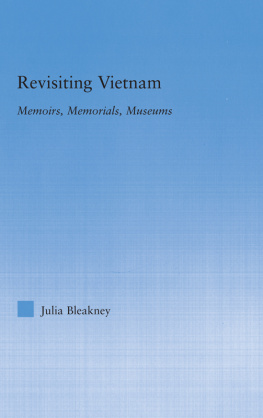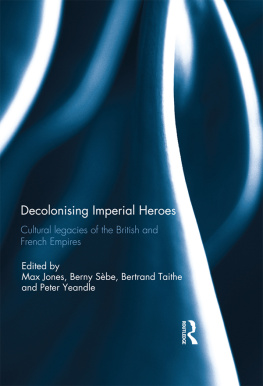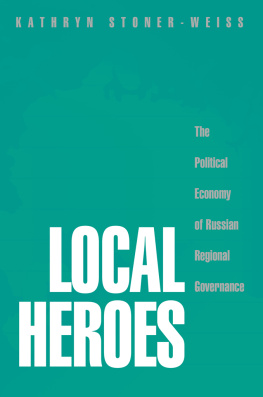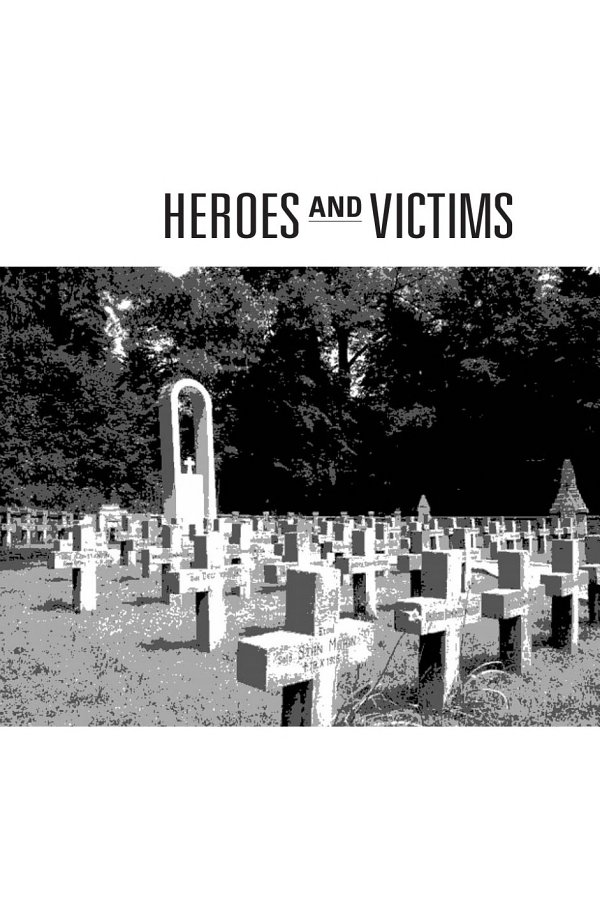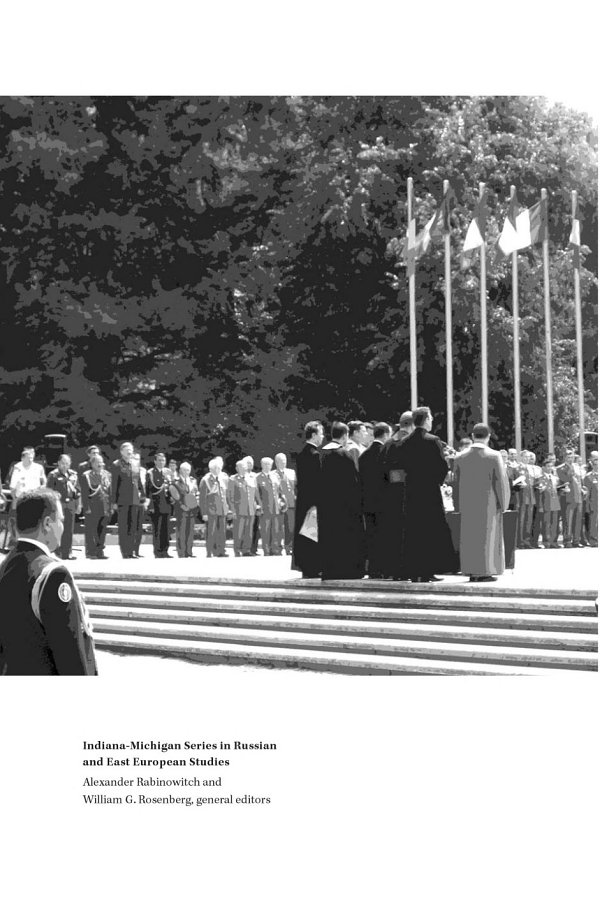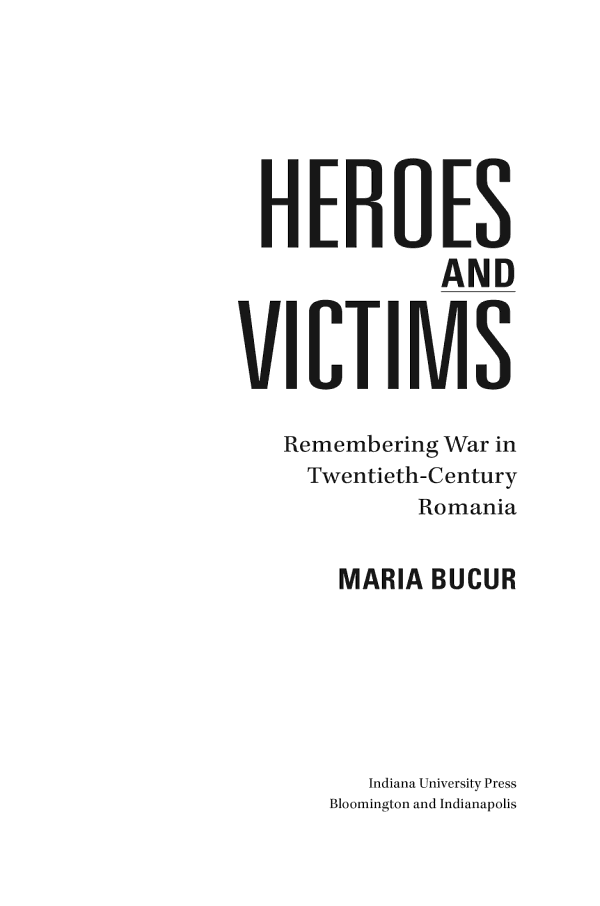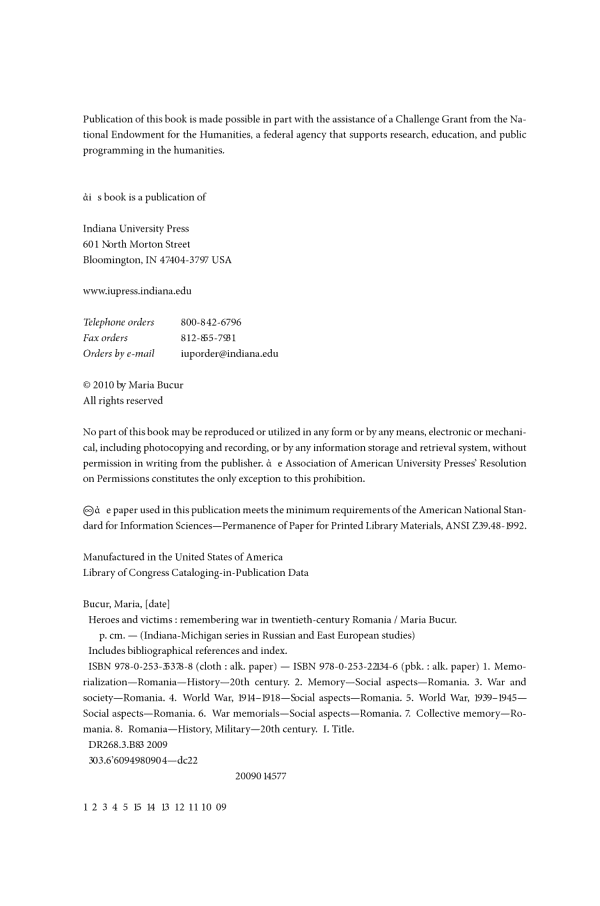To all the
Bucur Deckards in my life
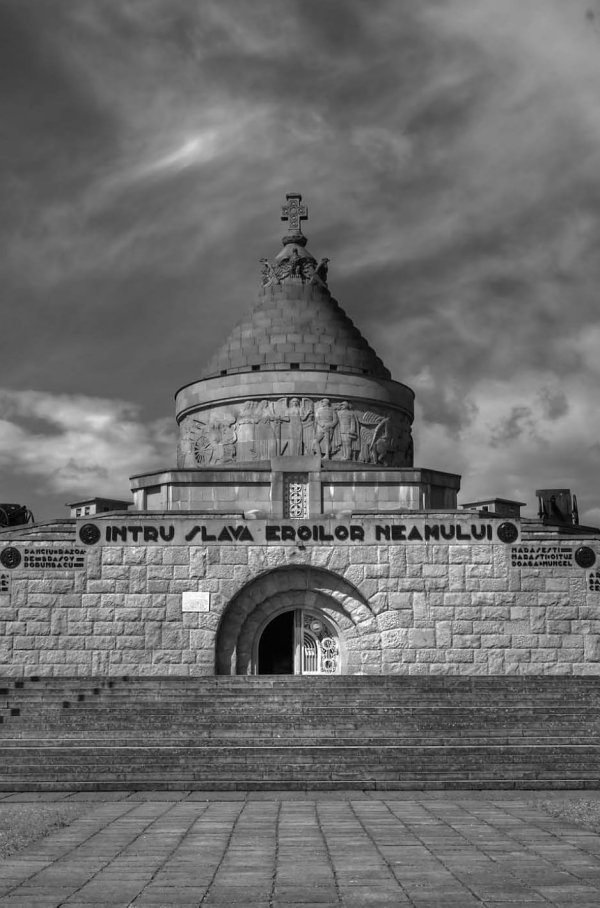
Preface
e kernel of this book was planted in 1997. Visiting Romania for the first time since completing my dissertation on the history of eugenics, I looked forward to refocusing my attention on the publishing industrys initial flourishing in the first decade after Communism. As I scoured bookstores and vendors for new and interesting materials, I came to realize that a new phenomenon was taking place before my eyes. Everyone wanted to publish a memoir, and everyone else wanted to buy these memoirs, read them, talk about them, and critique them. e genre of the memoir was seeing such unprecedented growth, with some examples appearing in very small runs but still somehow making the rounds, that I began to collect these publications. Soon I realized that there were two periods favored by most readers: World War II and the Stalinist years of Communist persecution. Observing this literary phenomenon and also speaking to people who were more than a generation older than I was (in their mid-forties and older), it became apparent that for those generations the project of recovering and making sense of their memories of the 1940s1950s was an urgent task, relevant to finding a new sense of social belonging.
is occurrence coincided with the beginnings of the growth of memory studies in U.S. and parts of European academia. I was thus fortunate to begin making sense of this vibrant phenomenon in post-Communist culture in the company of insightful historians and other scholars. i s study stands on the shoulders of important precursors that have inspired and challenged me to find my own answers to complicated questions. e work of Jay Winter, John Bodnar, John Gillis, Catherine Merridale, Nina Tumarkin, Gaines Foster, Robert Moeller, Vieda Skultans, Rubie Watson, and many others, has offered rich examples of ways in which memory is important not just as playground for politicians or as a psychological phenomenon, but also as a realm for making cultural meaning out of violence and destruction.1 eir insights also challenged me to articulate where to situate the memory traces I was studying within a broader discourse about remembrance and identity in the modern world. Much of the literature on this topic took nationalism and the nation as crucial referents for how memory traces are emplotted and deployed in the cultural realm. Such an analysis struck me as somewhat simplistic, even where it seemed to speak to a local reality, as in France, for instance, in the aftermath of World War I.2
ough nationalism is in fact everywhere apparent in eastern Europe today, it is far from a self-evident force with a straightforward, easily identifiable meaning. e reality is far more complicated, and the more I read through the work of these prominent scholars, the more I wanted to be able to understand the complexity of commemorative experiences beyond a simple narrative of inventing traditions for the sake of political legitimacy, as Terence Ranger and Eric Hobsbawm suggested in their pioneering study, or constructing rituals to mobilize masses around the flag, as Paul Connerton showed in How Societies Remember.3
e research of anthropologists working on contemporary Europe and further afield became an important reference point for how I began to modify my understanding of commemorative processes and products in twentieth-century eastern Europe. In particular, the work of Katherine Verdery and Gail Kligman opened up important avenues to allow considering how people in an overwhelmingly rural environment, and with a low level of literacy until the second half of the twentieth century, articulated their identities in connection to the past and community-based memory traces. Verderys study, e Political Lives of Dead Bodies, came out as I was starting to consider framing my study outside questions that focused primarily on nationalism.4Her theoretical insights into ancestor worship and her way of framing questions about rituals and discourses helped me find different questions and angles for my own project.
e work of historians of religion and anthropologists studying the cult of the dead also became important for understanding the kinds of diverse forces shaping choices that communities in Romania made to commemorate the war dead. Gail Kligmans work proved essential in this regard.5 In addition to her Wedding of the Dead, I was able to use the work of Mircea Eliade, as well as studies by Bruce Lincoln, Loring Danforth, Simion Florea Marian, and tefan Dorondel.6
e scholarship published in the past decade by scholars of eastern Europe and Russia has been a useful framework to help contextualize the specificity of my case study. Catherine Merridale and Nina Tumarkins work provided important points for considering relevant connections, but more often than not, differences between the Soviet case and that of eastern Europe in the twentieth century.7Some cultural connections pertained to the religious traditions among Orthodox populations in Russia and parts of eastern Europe. But many other differences separated these lands in both the pre-Communist and Communist periods, including the relationship between rulers and the ruled in terms of legitimacy, especially after World War II.
Historians working on Poland, from Jan Gross to Patrice Dabrowski and Christoph Mick have also helped me construct important points of reference with the Romanian case.8 In particular, the question of remembering a war fought on both sides by the population of post-1918 Poland, and then the question of responsibility and victimization as reference points in remembering World War II, played themselves out somewhat similarly in the two countries. Still, as memory is always local, one can find important differences between the ways communities in Poland have articulated their emotional relationships to the two world wars and the approaches of various groups in Romania. For instance, no Romanian group could ever claim a Home Army or any kind of underground partisan activity during World War II of the sorts that came to dominate the imagination of many Poles after 1945. Nor did the heartland of Romania live with the death camps of World War II, as was the case with postwar Poland. A literature on the memory of the world wars has also started to grow in the rest of eastern Europe, and some of these studies have been important for offering comparative insights in my own work.9
An interesting related scholarly debate has been developing around the question of the periodization of World War II. Declarations of war or the signing of an armistice or peace treaty no longer demarcate when the war started and when it ended. e legal definition of wartime violence has come under criticism from social and cultural historians who look at World War II as a total war, where mass violence against civilian populations in fact preceded the official beginning of the war in certain areas, and where both civilians and soldiers were embroiled in violent conflict after the official end of the war. A few years ago, Jan Gross advanced a bold notion that the periodization of the Communist takeovers should be pushed back to the beginning of World War II.10 In a recent book on the Communist takeover in Hungary, Peter Kenez makes the argument that the years 19451948 are a self-contained period. He positions himself in contradistinction both to Gross and to historians who see 19451948 as part of the Cold War, separate from World War II.11


